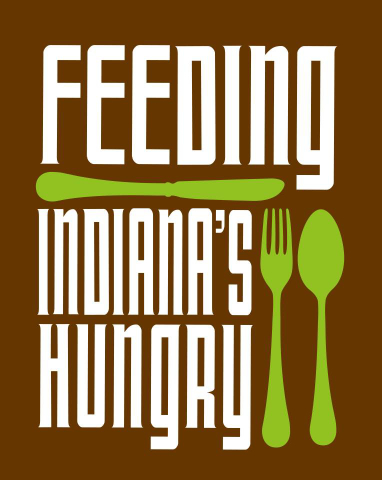As the number of families struggling to make ends meet increased significantly during the recession, Indiana’s food insecure population now includes one in six Hoosiers, and just one in four Hoosier children. As food banks continue to be pressed to meet need in their communities, we have experienced significant declines in federal commodity purchases.
In partnership with more than 1,700 local agencies, 62% of which are faith-based, our food banks are now feeding roughly 700,000 Hoosiers a year. We could not meet current need without support from federal nutrition programs like TEFAP and CSFP, nor could we meet the demand if other federal nutrition programs were weakened or charitable giving tax deductions were limited.
As Congress addresses our nation’s fiscal challenges, Feeding Indiana’s Hungry urges legislators to safeguard nutrition assistance and other safety net programs.
The Emergency Food Assistance Program (TEFAP):
TEFAP helps food banks provide nutritious food to low-income Hoosiers in need of short-term hunger relief in partnership with local pantries, soup kitchens, and emergency shelters. TEFAP Food Commodities accounted for 19% of the food moving through the member food banks of Feeding Indiana’s Hungry in 2012, down from 24% of the total distribution in 2011, including mandatory commodities required by the Farm Bill and bonus commodity purchases made by USDA either to satisfy Farm Bill specialty-crop purchase requirements or in response to market conditions. TEFAP commodity support dropped by over 40% in FY2012 for many food banks due to strong agricultural markets and a decrease in bonus commodity funding (Section 32). TEFAP Storage and Distribution Funds are needed by member food banks to provide this service most efficiently.
The FY2013 Agriculture Appropriations bill should:
Provide full-funding for TEFAP mandatory commodities at $269.5 million, as required by the 2008 Farm Bill.
Provide $100 million for TEFAP Storage and Distribution Funds, also as required by the Farm Bill, to support the infrastructure and distribution capacity necessary to meet current levels of need.
The Farm Bill should:
Make TEFAP commodities more responsive to changes in need by tying mandatory funding to unemployment levels and clarify the Agriculture Secretary’s authority to purchase bonus commodities in response to high need as well as low commodity prices. Reauthorize TEFAP Storage and Distribution Funds at $100 million per year and TEFAP Infrastructure Grants at $15 million per year.
The Secretary of Agriculture should:
Apply bonus TEFAP purchase criteria as generously as possible and make specialty crop purchases for TEFAP often to increase the availability of TEFAP commodities to help struggling Americans and the nation’s food banks.
Commodity Supplemental Food Program (CSFP):
CSFP leverages government buying power to provide nutritious food packages to 599,000 low-income people each month. Nearly 97% of CSFP participants are seniors with incomes of less than 130% of the Federal Poverty Line (approximately $14,157 for a senior living alone), and they receive a monthly food package with an average retail value of $50. CSFP is available in 18 Indiana counties.
The FY2013 Continuing Resolution and FY 2014 Agriculture Appropriations bill should:
Provide $186.9 million for CSFP to maintain current caseloads in existing states.
The Farm Bill should:
Transition CSFP to a seniors-only program by phasing out eligibility of women, infants, and children while grandfathering in current participants to promote greater efficiencies and recognize CSFP’s evolution to serving a primarily senior population.
Supplemental Nutrition Assistance Program (SNAP):
SNAP is the cornerstone of the nutrition safety net, providing 47 million low-income people, and 908,000 Hoosiers, with monthly benefits that are timely, targeted, and temporary. SNAP proved to be one of the most responsive safety net programs, growing quickly to meet rising need resulting from high unemployment in the recession. 83% of benefits go to households with a child, senior, or disabled person, and new participants spend an average of 10 months on the program.
The FY2013 Agriculture Appropriations bill should:
Oppose funding cuts and harmful policy proposals to SNAP, including efforts to block grant, cap, or cut funding; imposing restrictive work requirements; or otherwise reducing benefits or restrict participation.
The Farm Bill should:
Maintain funding to support current eligibility and benefit levels.
Tax Provisions to Encourage Food Donations:
Feeding Indiana’s Hungry member food banks rely on support from a variety of sources, including individual giving, corporate and foundation contributions, and donations from all segments of the food industry, from field to fork. Studies show that tax policy significantly impacts how often and how much Americans give to nonprofits. Preserving the charitable giving tax deduction maintains the ability of nonprofits to raise funds at a time when food banks can ill afford to lose funding.
Renew and expand the Good Samaritan Hunger Relief Tax Incentive Act to reduce barriers to donation and divert excess food from the landfill to hungry Hoosiers and other Americans from field to fork.
Reject a cap on the charitable giving tax deduction in deficit reduction or comprehensive tax reform to protect the ability of food banks to raise vitally needed private funds.



